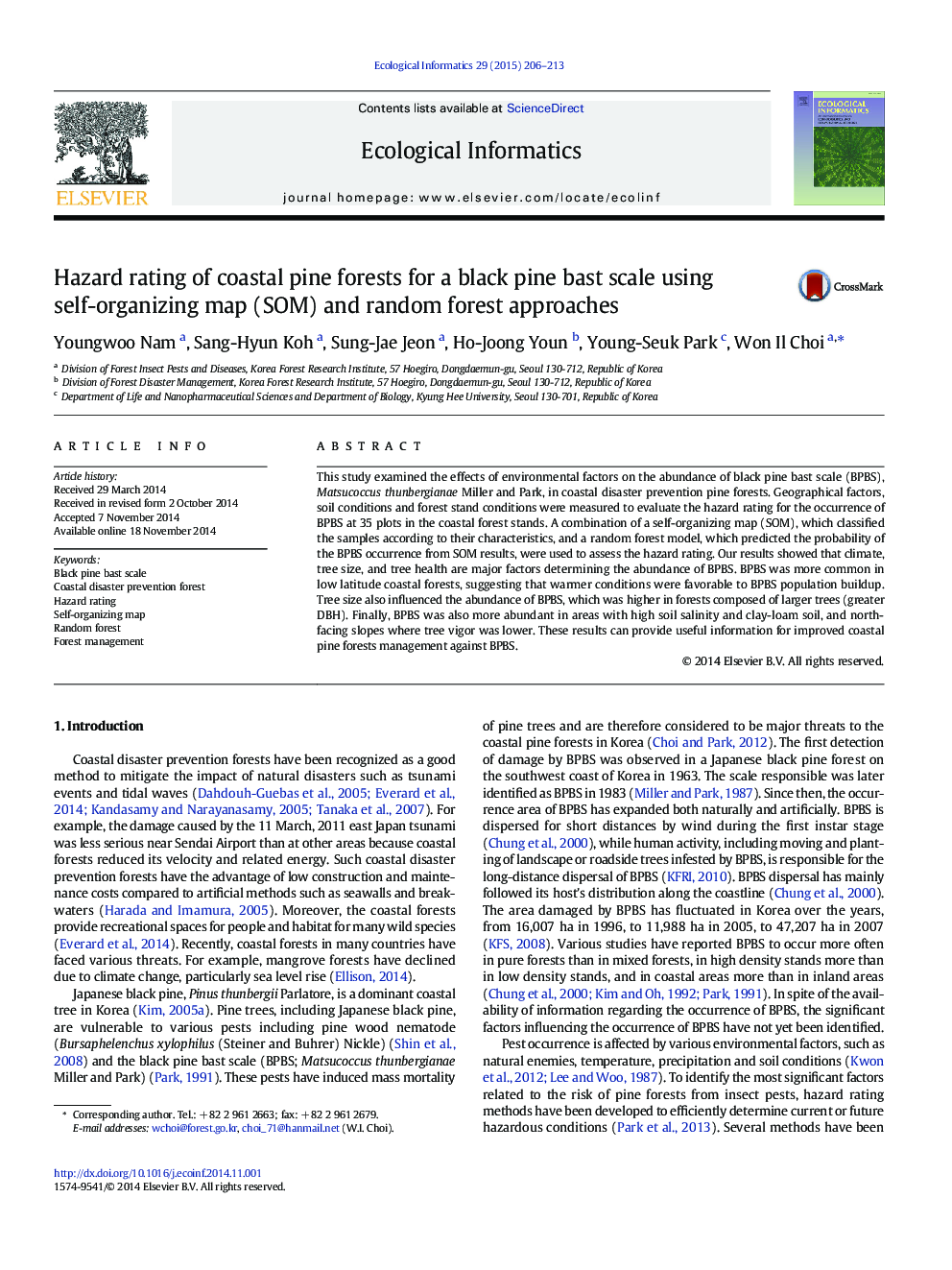| کد مقاله | کد نشریه | سال انتشار | مقاله انگلیسی | نسخه تمام متن |
|---|---|---|---|---|
| 4374807 | 1303217 | 2015 | 8 صفحه PDF | دانلود رایگان |

• Abundance of BPBS was affected by climate, tree size, and tree health.
• Warmer conditions were favorable to BPBS population buildup.
• Abundance of BPBS was higher in forests composed of trees with larger DBH.
• BPBS was also more abundant in areas where tree vigor was lower.
This study examined the effects of environmental factors on the abundance of black pine bast scale (BPBS), Matsucoccus thunbergianae Miller and Park, in coastal disaster prevention pine forests. Geographical factors, soil conditions and forest stand conditions were measured to evaluate the hazard rating for the occurrence of BPBS at 35 plots in the coastal forest stands. A combination of a self-organizing map (SOM), which classified the samples according to their characteristics, and a random forest model, which predicted the probability of the BPBS occurrence from SOM results, were used to assess the hazard rating. Our results showed that climate, tree size, and tree health are major factors determining the abundance of BPBS. BPBS was more common in low latitude coastal forests, suggesting that warmer conditions were favorable to BPBS population buildup. Tree size also influenced the abundance of BPBS, which was higher in forests composed of larger trees (greater DBH). Finally, BPBS was also more abundant in areas with high soil salinity and clay-loam soil, and north-facing slopes where tree vigor was lower. These results can provide useful information for improved coastal pine forests management against BPBS.
Journal: Ecological Informatics - Volume 29, Part 2, September 2015, Pages 206–213